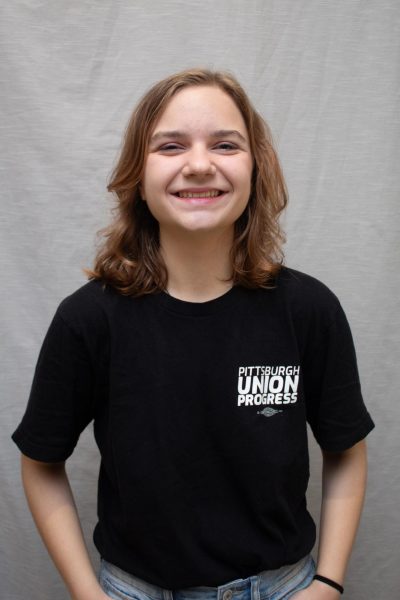Chatham University has unveiled “The Light of the Masculine Divine,” a new art gallery exhibit in the Susan Bergman Gurrentz ‘56 Art Gallery in Woodland Hall on the Shadyside campus. The exhibit features beadwork by Pittsburgh artist Celeta Hickman and African art from Chatham’s Olkes collection with the goal of highlighting the culture and religion of Yoruba, an African ethnic group. Visitors can see the exhibit 11 a.m. to 5:30 p.m. weekdays until it closes Feb. 23.
Hickman curated the exhibit herself after browsing the Olkes collection, named after Cheryl Olkes who gifted the collection to the University in 2001 with little to no record of where the pieces came from or from what culture.
Hickman is an initiated priest in the Cuban Lukumi lineage of the Yoruba religious tradition. As a part of her initiation, she learned how to bead pieces, like some of those in the Olkes collection. She selected some of her own beadwork and pieces from the collection that illustrate the masculine divine.
The exhibit’s title comes from Hickman’s religious practices. She explained the process of becoming initiated as a priest in the tradition.
“You get told when you go to get initiated, ‘This is who’s you’re going to be initiated to, this is whose light you carry,’” she said. “You carry the light of that particular Orisha. The Orisha are energy forces in nature, divinely ordered and guided by the light of God. We call God, ‘Olodumare.’”
When Hickman was initiated, she became a child of the Orisha Oshun, who she described as the “epitome of the feminine divine.” As a part of the initiation, she also carries the masculine light of the Orisha Elegba, who features prominently through the art and pieces in the exhibit.
“I believe in balance. So, I am the daughter of a wonderful father who’s gone to glory,” she said. “I am the sister of five brothers, and I’m the mother of two sons. How can I not honor the masculine divine?”
The exhibit is funded through a $20,000 grant from the Heinz Foundation for small arts initiatives. According to Gallery Director and Associate Professor of Art History James Louks, the exhibit is part of a bigger conversation about how to best use the Olkes collection.
“It’s part of a longer or a larger process of thinking about how to best utilize our African art collection, to be making this more available to both students and the larger community as opposed to being something that was essentially tucked away in storage,” he said. “I think it also is an important thing that most museums and places are kind of reckoning with is what should the role of institutions be that have large collections like this?”
Discussions of repatriation and proper display of cultural objects are becoming more and more prominent as institutions adapt to new federal laws surrounding the display of Native American objects and remains. In January, the Native American Graves Protection and Repatriation Act, a federal law that dictates what protections said objects and remains have, was updated. Now, any museums or federal agencies must obtain consent from descendants, tribes, or Native organizations before displaying any objects or remains.
It’s a discussion that’s hinted at throughout Hickman’s interview as she describes how few African art historians are actually of African descent themselves, and as she explains how the objects in the collection were familiar to her as an artist-practitioner.
“It’s one thing to read something in a book,” she said. “It’s another thing when it’s on a shrine in your home.”
Dr. Elisabeth Roark, a professor of art history and museum studies at Chatham who works closely with the collection, said she is trying to get grants to better fund the preservation of the collection because getting a conservator who specializes in African art is expensive.
“We do have some pieces that are in desperate need of conservation,” she said. “I’m not talking about doing the entire collection of over 600 works. That would be impossible. But there are certain works that are very important that I’m hesitant to show because their strings are beginning to unravel, or there’s leather that’s hardened, and it’s become very fragile.”
If readers are interested in learning more about the exhibit and the collection, there will be a series of events leading up to the final day of the exhibit. From 5 to 7 p.m. Feb. 16, a drumming procession will perform while the final pieces in the exhibit are installed, followed by a lecture on Yoruba art and life by Dr. Babatunde Lawal, a professor of art history who specializes in African art.
Hickman will also host a collaborative beading event from 4 to 6:30 p.m. Feb. 22 where attendees will join together to bead a piece.
From 11 a.m. to 4 p.m. Feb. 23, the final day of the exhibit, Hickman will be in the gallery for a meet-and-greet.
Once Hickman’s exhibit is done, the gallery will have two more shows in the spring semester: an exhibition of work from Chatham’s visual and media arts and immersive media faculty that will run from March 7 to April 5 and a capstone exhibition for graduating students from April 15 to April 28, the day of spring commencement.



